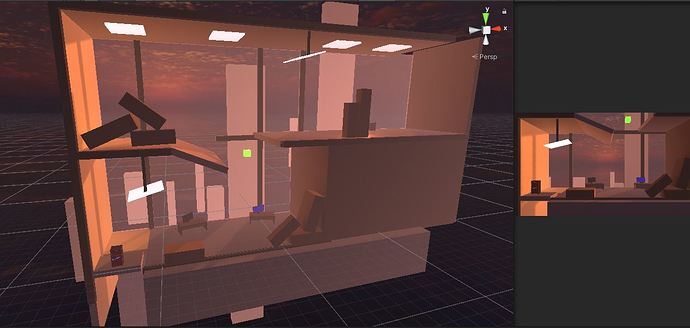This second level is still a tutorial one, but after that I would like to build more challenging levels…but with a method and not just by throwing things out of nowhere. Sooooo! I sort of decided how I would tackle the level design for the game we are building in this part of the courses. I figured I have pretty much three avenues for varying the level design: direction, speed and duration.
Direction:
To simplify things, and to stick with my office building crumbling and you having to escape in a flying fridge, I’m only concerned with moving sideways or up. No downfalls or super convoluted shapes. So level either go generally up, or generally to the right or the left, depending on where the player starts.
Speed:
With the controls we built in the course, we can move relatively fast when uninterrupted, but we can also hover farelly well. So adding more obstacles let’s us slowdown the rythm, and having wider less cramped levels let’s us accelerate.
Duration:
That’s directly linked to the size of the level. Since I’m going to fully embrace the one-shot nature of the collision system we are building, a short or long level can make a big difference in terms of difficulty.
And so, I have these templates for creating levels that I can alternate to create varied levels:
Vertical levels:
Up - Quick -Short
Up - Quick - Long
Up -Slow - Short
Up - Slow -Long
Horizontal levels:
Right - Quick -Short
Right - Quick - Long
Right - Slow - Short
Right - Slow -Long




